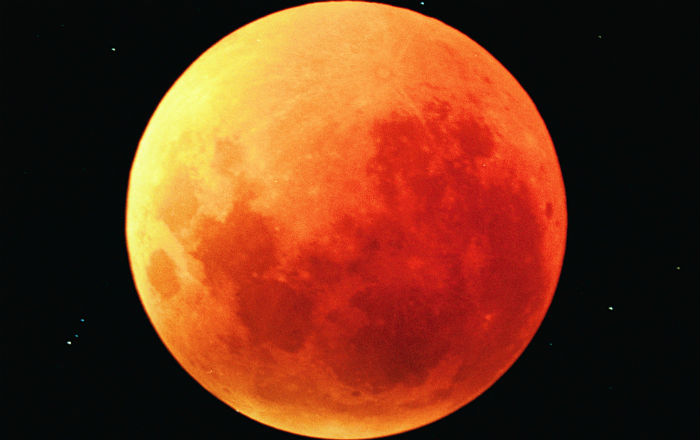St. George Astronomy Group says get outside early April 4 for lunar eclipse

The Independent
Residents of St. George and surrounding communities – and the western United States – who get up early on the morning of Saturday, April 4, will be treated to a total eclipse of the moon. No special equipment is needed to observe one of nature’s more interesting spectacles; merely step outside and look up.
An eclipse of the moon happens when the moon moves into the shadow of the earth and grows dark. This can happen only at full moon, when the moon is opposite the sun in the sky. Usually the moon’s orbit takes the moon above or below the earth’s shadow, but if the alignment is just right the moon can move into and through the shadow, and the moon grows dark as sunlight that would fall on it is blocked by the earth.
The eclipse officially begins at 3:01 a.m. MDT on the morning of April 4 when the moon’s left edge begins to move into the outer (penumbra) part of the earths’ shadow, but in practice the moon won’t begin to darken noticeably until after 4 a.m. By 5 a.m. the darkening will be obvious to the casual observer. At 5:58 a.m. the moon moves fully into the inner (umbra) part of the earth’s shadow and totality begins. Totality lasts only five minutes and ends at 6:03 a.m., when the moon begins to move out of the central part of the earth’s shadow and brighten once again. By then the sky is already becoming quite bright with the approaching dawn.The moon sets while still eclipsed.
The best strategy is to set your alarm for 6 a.m., step outside, and enjoy the free show. Note that the moon is very low in the west and it is essential that you have a clear view of the western horizon.
If you were on the moon at this time, you would see the earth move in front of the sun in a total eclipse of the sun. Perhaps future astronauts will see such events from their lunar bases.
No special equipment is needed to see a lunar eclipse, although binoculars or a small telescope will enhance the view. The moon will be very low in the western sky (altitude only 15 degrees), so find a place with a clear view to the west.
While watching the moon pause to notice the bright star Spica 10 degrees (the width of your fist held at arm’s length) to the left of the moon and the star Arcturus well above the moon. Farther to the left is the red star Antares and above and to the right of Antares is the planet Saturn.
The eclipse is visible simultaneously from North America roughly west of St. Louis. Adjust for the local time zone if necessary.
Because of the early hour the St. George Astronomy Group (SGAG) will not hold a public observing session to view this eclipse. View it from your own home.
The next total lunar eclipse visible from St. George will happen on Sunday, September 27, and because it will take place during the early evening hours it will be widely observed.
SGAG welcomes new members and you can sign up to join or to be notified of upcoming events at our website.
The St George Astronomy Group is Washington County’s newest astronomy advocacy organization, and our mission is to (1) preserve the dark skies over Southern Utah through proper outdoor lighting and (2) to reach out to the public through free star parties and other public events. We can be reached through our website: https://sites.google.com/site/StGeorgeAstronomyGroup




